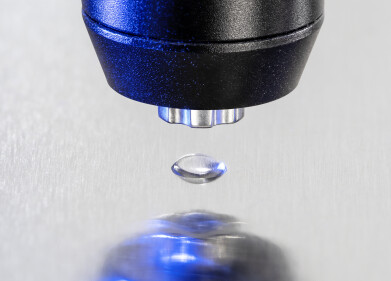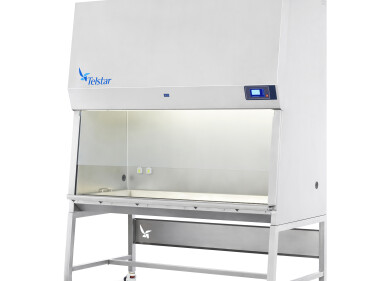-
 Daniel Moldenhauer uses the new NS500+DLS in the Groehn group at the University of Erlangen-Nürmberg.
Daniel Moldenhauer uses the new NS500+DLS in the Groehn group at the University of Erlangen-Nürmberg.
Laboratory Products
NanoSight adds DLS capability to NTA systems, accelerating aggregation studies.
Aug 07 2013
NanoSight is pleased to announce the launch of the first DLS-enabled version of their widely-used NS500 instrument. For the first time these two powerful and complementary techniques come together in one instrument, designated NanoSight NS500+DLS. This gives all the benefit of Nanoparticle Tracking Analysis (NTA) in high resolution sizing, with DLS extending the lower detection limit to 4nm.
Bob Carr, NanoSight’s founder and CTO, described the rationale of having these techniques alongside one another; “These two technologies address sub-micron particle characterisation very differently. While both NTA and DLS exploit Brownian motion and use laser illumination to deliver hydrodynamic particle diameter, there the commonality ends. DLS measures time-based fluctuations of coherent light caused by Brownian motion, whereas with NTA the scatter of laser-illuminated particles in Brownian motion is visualised and particles are individually tracked. DLS is fast, accurate and precise on monodispersed samples. However its essential limitation, being an ensemble technique, is that the size distribution it reports is frequently unrepresentative for complex, polydisperse samples. In contrast, NTA’s particle size distribution is of much higher resolution, but with a higher lower limit of detection of between 10 and 35nm, dependent principally on the sample type. We see NTA as the instrument of choice, for the range it covers (nominally 10 – 2,000nm), but some work demands a lower limit of detection. Here DLS can contribute an extension down to around 4nm. This extra range is particularly useful for the study of the earliest stages of protein aggregation, where dimerization and subsequent growth of aggregates from monomeric state can be observed. We also see a significant contribution in the study of the potential toxicology of engineered nanomaterials where dispersion quality assessment of particles less than approximately 20nm cannot currently be met by NTA”.
In the NS500+DLS, the DLS software is integrated into the NTA suite, providing easy interchange between NTA and DLS data collection. The DLS data reported is Z-average diameter, Polydispersity Index (PDI) and Particle Size Distribution (PSD).
Daniel Moldenhauer of the Chemistry & Pharmacy Department from the University of Erlangen-Nürmberg in Germany was part of the evaluation team that trialled the Beta version of the NS500+DLS. He said “It is easy to use and the operator can’t really make any mistakes. We have another commercial DLS system and the data from it and the NanoSight NS500+DLS are comparable.”
Carr continued “A second benefit to the wider detection range that this combination brings is that NTA informs the reliability of the DLS data. DLS is notoriously vulnerable to larger contaminant particles, which produce a spurious but difficult to diagnose shift of the particle size distribution to the right. With
NTA, such contaminants are immediately evident. So we have NTA addressing this DLS weakness, resulting in an NTA-endorsed DLS result.”
To find out about the company and to learn more about NanoSight’s unique Nanoparticle Tracking Analysis solutions, visit Nanosight.com
Digital Edition
International Labmate 49.6 - Sept 2024
September 2024
Chromatography Articles - HPLC gradient validation using non-invasive flowmeters Mass Spectrometry & Spectroscopy Articles - From R&D to QC, making NMR accessible for everyone: Putting NMR...
View all digital editions
Events
Oct 06 2024 Liverpool, UK
Oct 08 2024 Gothenburg, Sweden
Oct 09 2024 Birmingham, UK
Oct 09 2024 NEC, Birmingham, UK
Oct 15 2024 Milan, Italy


.jpg)














